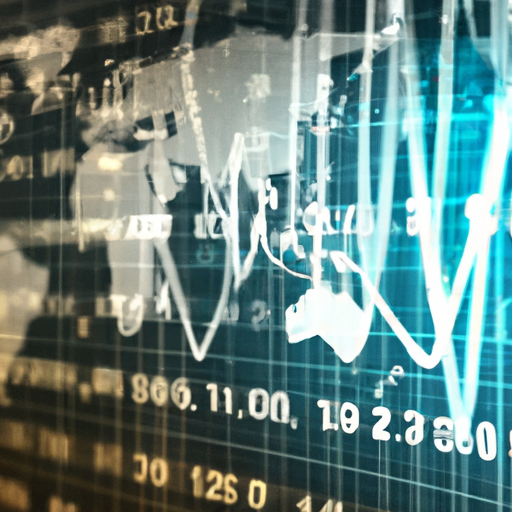Understanding Automated Trading: Revolutionizing The Way We Trade
Automated trading is a game-changer in the financial world, transforming the way we approach investment and trading.
By leveraging powerful algorithms, automated trading systems execute trades with precision and speed, often outperforming human traders.
But what exactly is automated trading, and why should you consider integrating it into your trading strategy?
Let’s dive in and explore the fascinating world of automated trading.
What Is Automated Trading?
Automated trading, also known as algorithmic trading or algo-trading, involves using computer programs to execute trades automatically based on predefined criteria.
These programs analyze market conditions, identify opportunities, and execute trades without human intervention.
The goal is to maximize efficiency and profitability while minimizing emotional decision-making.
Imagine you’re a trader who spends hours analyzing charts and market trends.
With automated trading systems, you can set specific parameters for your trades and let the computer do the heavy lifting.
This not only saves time but also ensures that your trades are executed with lightning speed—often within milliseconds.
The Evolution Of Automated Trading
Automated trading has come a long way since its inception in the 1970s when simple algorithms were first used to manage large portfolios.
Today, advanced algorithms leverage artificial intelligence (AI) and machine learning (ML) to adapt to ever-changing market conditions.
The advent of high-frequency trading (HFT) has further revolutionized the field by enabling thousands of trades to be executed within seconds.
Platforms like MetaTrader 4 and 5 are among some of the best trading platforms that support sophisticated automated strategies.
These platforms provide traders with various tools to develop, backtest, and implement their algorithms seamlessly.
Advantages Of Automated Trading
There are numerous benefits associated with automated trading that can give traders a significant edge in the market.
Here are some key advantages:
Consistency And Discipline
One of the biggest challenges for traders is maintaining discipline amidst volatile markets.
Emotions such as fear and greed often lead to irrational decisions.
Automated systems eliminate this problem by sticking rigidly to pre-established rules, ensuring consistent execution of your strategies.
For instance, suppose you have a profitable strategy but tend to deviate from it due to emotional biases.
With an automated system in place, every trade adheres strictly to your plan without deviation.
Speed And Precision
In today’s fast-paced markets, speed is crucial for capitalizing on fleeting opportunities.
Automated systems can analyze vast amounts of data almost instantaneously—far quicker than any human could manage—and execute orders at optimal prices before these opportunities disappear.
Consider high-frequency traders who rely heavily on automation; they can execute thousands of orders per second across multiple exchanges globally—a feat impossible for humans alone!
Diversification And Risk Management
Diversifying investments across different asset classes helps mitigate risk—a fundamental principle in finance.
Automated systems enable diversification by simultaneously managing multiple accounts or strategies efficiently without overburdening individual resources or efforts.
For example: You might want exposure both in equities as well as foreign exchange markets but lack sufficient time or expertise required for managing both manually—an automated system could handle this seamlessly!
Challenges And Considerations In Automated Trading
While there are numerous benefits associated with automated trading, it’s important also not overlook potential challenges involved:
Technical Issues And Failures
Despite being highly sophisticated machines capable performing complex tasks autonomously—they’re still susceptible technical glitches which could result significant losses if not properly managed monitored regularly!
Imagine having perfect strategy implemented perfectly only realize later down line due unforeseen bug causing unexpected behavior leading substantial financial damage—it’s essential always keep close eye ensure everything functioning smoothly!
Over-Optimization And Curve Fitting
Another common pitfall many fall into when developing their own algorithms involves over-optimizing historical data known curve fitting where model performs exceptionally well past performance yet fails miserably future scenarios because overly tailored specific dataset rather generalizable real-world conditions!
To avoid falling trap make sure validate thoroughly using out-of-sample testing techniques ensure robust against various market environments!
Selecting The Best Trading Platform For Automation
Choosing right platform crucial success implementing effective algorithmic strategies here few factors consider making decision:
User-Friendly Interface And Customization Options
Look platforms offer intuitive user interfaces along customizable features allow tailor-make according unique preferences needs example: MetaTrader series renowned providing extensive customization capabilities enabling users easily design backtest optimize their own proprietary models
Reliability Security Features
Ensure chosen platform reliable secure prevent unauthorized access potential cyber threats compromising sensitive information funds involved popular choices include Interactive Brokers NinjaTrader known their robustness security measures place protect clients’ interests
By carefully selecting best platform suit individual requirements taking advantage available resources tools provided these modern technologies one step closer achieving success through efficient disciplined approach offered automated solutions
In conclusion exploring embracing power offered automation within realm finance not only enhance effectiveness overall experience navigating complex dynamic landscape modern-day markets!

